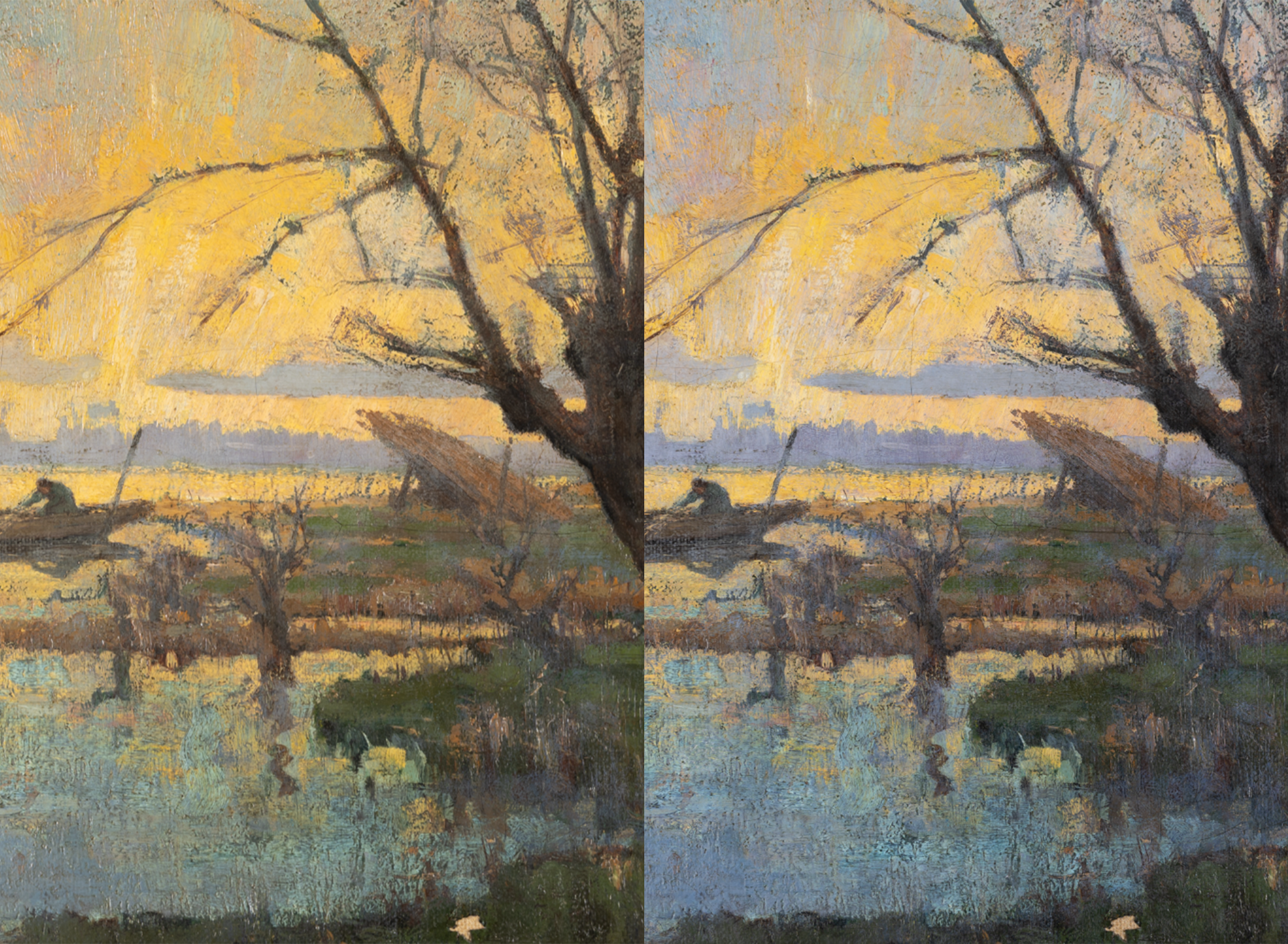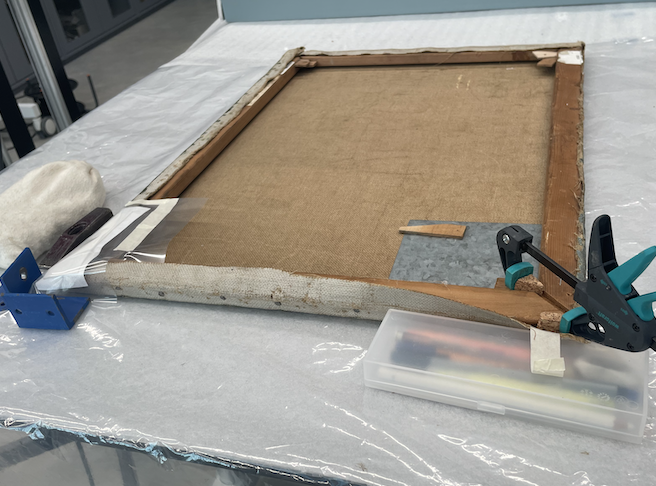Waterlanschap bij avond
-
Object: Oil on canvas
Title: Waterlandschap bij avond (Waterlandscape at evening)
Artist: Christiaan Hendrik Hammes (1872-1965)
Date: 1915
Dimensions: 47.0 x 65.0 cm
Collection: Rijksdienst voor het Cultureel Erfgoed, Amersfoort
-
Surface accretions
Yellowed and distractingly glossy varnish
Various losses
Compromised structural integrity (e.g. protruding key, frayed canvas edged, broken stretcher, deformed canvas)
-
Goal: to improve the aesthetics and the physical integrity of the painting.
Preliminary consolidation
Any loose paints need to be consolidated in preparation for subsequent handling and treatment.
Surface cleaning
The layer of foreign deposits needs to be removed to reveal the surface underneath. Cleaning can mitigate further degradations that are triggered by surface dirt and organic materials, like biological threats and moisture attraction.
Varnish removal
For a painting with a highly texturized surface (heavy impasto), the glossy varnish becomes distracting. Retaining this layer also compromises the chromatic balance since it has yellowed over time. The long-term safety of the painting can also be jeopardized since the natural-origin varnish will continue to oxidize, and its future removal will require a more aggressive removal system. So a varnish removal treatment is proposed.
Structural treatment
Structural issues like fragile edges and protruding keys need attention to restore the painting’s structural integrity.
Consolidation
Varnish removal can reveal more loose paints that need to be consolidated.
Fills
The painting shows quite a few losses that need to be filled. This will achieve a leveled surface regarding the entire paint surface.
Re-varnish
Adding a layer of stable and synthetic varnish will ensure more saturated colours, even gloss, and surface protection.
Reintegration
A full imitative retouching campaign is in favour to restore the visual unity of the painting.
Treatment
highlights…
Varnish removal
Removing the varnish from this painting was a challenging process due to selective solvent sensitivity and heavy impastos. Aiming to find a fine balance between thoroughness and efficiency amidst the challenges, a total of six different approaches to target each area and concern were adopted. A brief overview is shown. Tap into some of the important and interesting episodes that substantiate this campaign below.
This video shows one of the methods, where a peelable gel based on ethylcellulose and an organic solvent mixture is used to clean the heavy impastos in the light colours.
Effect of the peelable ethylcellulose gels:
a) Area before cleaning
b) Area with a peelable ethylcellulose gel loaded with a low solvent mixture pressed into shape with Evolon tissues
c) Area after removal of gel and cleansing with an even lower polarity solvent mixture in normal light
d) Area after removal of gel and cleansing with an even lower polarity solvent mixture in raking light
Applying and texturing thermoplastic fills (based on BEVA 371b and microcrystalline wax) using casted silicone moulds and heat.










